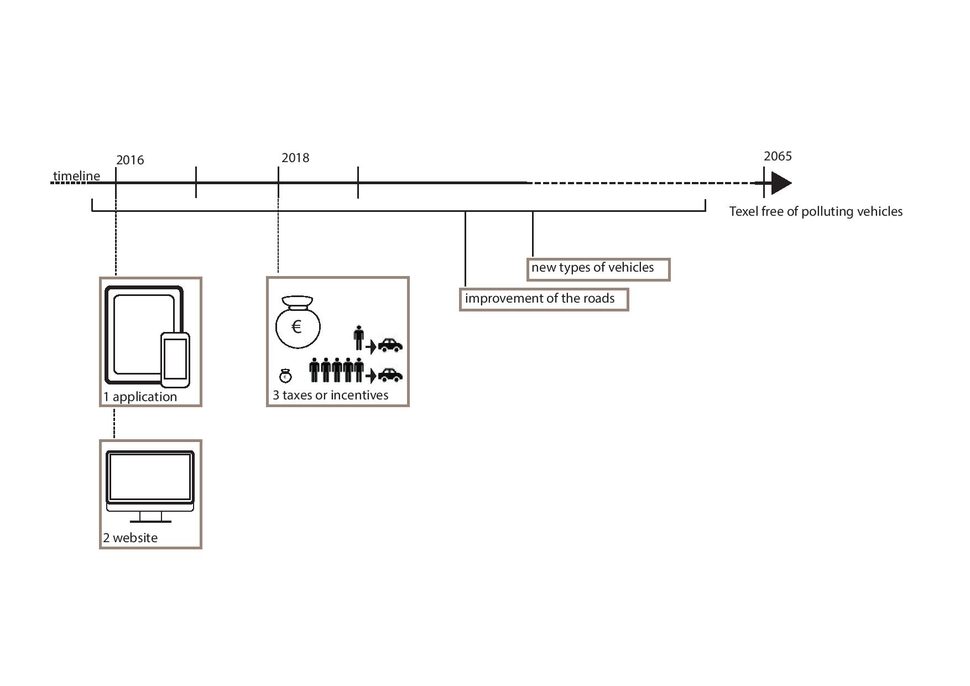(Image timeline of the concepts)
The concepts explained in chapter 2.3 will not all be used at the same time. First the application and the website will start. This will make the people more aware of the environmental impact that the current mobility system has on Texel environment and on their well-being and also the benefits that could be gained via sustainability in mobility. For example different columns on mobility and also events connected to this, lectures on sustainable mobility could be some activities related to the website. The website will be developed over time with research results that will present how the implemented sustainable mobile system affects the initial environmental picture. The point of this will be hopefully to show the positive results of the system with the purpose of enhancing people to continue with contributing in this change. After a couple of years, the people will be more informed and aware so bigger steps can be taken. The concept of taxes and incentives can be conducted. People will be more forced to be sustainable on the go.
Besides these concepts, there is a lot changing in the world of mobility. For example electric cars are becoming more feasible and self-controlled cars are also not inconceivable. The mobility is continuously growing, but the tightening CO2 regulations are forcing the mobility industry to change. There are already differences in using cars. Car sharing is for example a growing trend and the integration of media is becoming more common. People want to be connected today more than ever before. Requirements on mobility for the future are being connected and offering flexibility via car sharing (McKinsey, 2012). These two requirements are also included in the concepts explained in paragraph 2.3.
So when we think about the changes in the longer period, there will be new types of vehicles on Texel. For example the Vrachtfiets explained in the first chapter or more electrical vehicles. The Texelhopper, the ‘on demand’ bus company on Texel, will be more available. The quality of the bike roads on Texel will be improved. The connection between the villages will be stronger, better quality roads and maybe even a solar powered bike path? We can say as a conclusion that mobility will be more sustainable in 2065, but Texel can be self-sufficient in the coming decades . The concepts can create money for the future plans.
